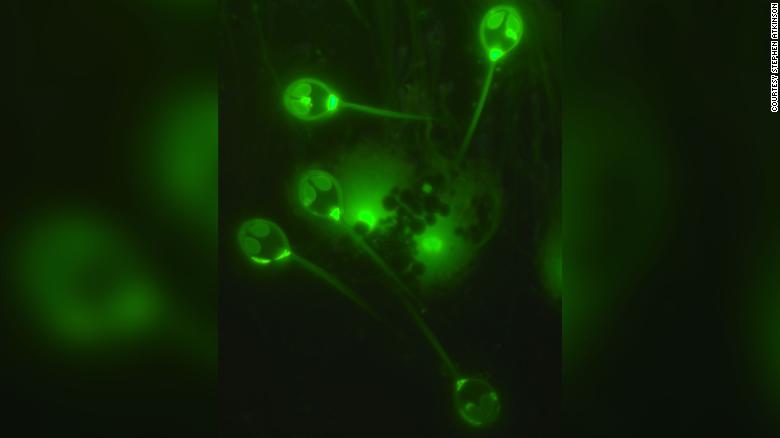[cite+Paleontologists Find One-Billion-Year-Old Green Seaweed Fossils | Paleontology | Sci-News.com]
Paleontologists Find One-Billion-Year-Old Green Seaweed Fossils
Feb 25, 2020 by
News Staff / Source
Paleontologists have discovered the microscopic fossilized remains of green seaweed near Dalian in the Liaoning province of northern China. The microfossils are approximately one billion years old. They represent a previously unknown species of green seaweed, named
Proterocladus antiquus, and are barely visible to the naked eyed at 2 mm in length, or roughly the size of a typical flea.
 Proterocladus antiquus
Proterocladus antiquus. Image credit: Virginia Tech.
“These new fossils suggest that green seaweeds were important players in the ocean long before their land-plant descendants moved and took control of dry land,” said senior author Professor Shuhai Xiao, a researcher in the Department of Geosciences and Global Change Center at Virginia Tech.
“The entire biosphere is largely dependent on plants and algae for food and oxygen, yet land plants did not evolve until about 450 million years ago.”
“Our study shows that green seaweeds evolved no later than one billion years ago, pushing back the record of green seaweeds by about 200 million years. What kind of seaweeds supplied food to the marine ecosystem.”
The current hypothesis is that land plants — the trees, grasses, food crops, bushes, even kudzu — evolved from green seaweeds, which were aquatic plants. Through geological time they moved out of the water and became adapted to and prospered on dry land, their new natural environment.
“These fossils are related to the ancestors of all the modern land plants we see today,” Professor Xiao said.
“However, the caveat that not all geobiologists are on the same page — that debate on the origins of green plants remains.”
“Not everyone agrees with us; some scientists think that green plants started in rivers and lakes, and then conquered the ocean and land later.”

In the background of this digital recreation, ancient green seaweed
Proterocladus antiquus is seen living in the ocean one billion years ago. In the foreground is the same seaweed in the process of being fossilized far later. Image credit: Dinghua Yang.
There are three main types of seaweed: brown (Phaeophyceae), green (Chlorophyta), and red (Rhodophyta), and thousands of species of each kind.
Fossils of red seaweed, which are now common on ocean floors, have been dated as far back as 1.047 billion years old.
“There are some modern green seaweeds that look very similar to the fossils that we found,” Professor Xiao said.
“A group of modern green seaweeds, known as siphonocladaleans, are particularly similar in shape and size to the fossils we found.”
Photosynthetic plants are, of course, vital to the ecological balance of the planet because they produce organic carbon and oxygen through photosynthesis, and they provide food and the basis of shelter for untold numbers of mammals, fish, and more.
“Yet, going back 2 billion years, Earth had no green plants at all in oceans,” Professor Xiao said.
“
Proterocladus antiquus seaweeds display multiple branches, upright growths, and specialized cells known as akinetes that are very common in this type of fossil,” said lead author Dr. Qing Tang, a postdoctoral researcher in the Department of Geosciences and Global Change Center at Virginia Tech.
“Taken together, these features strongly suggest that the fossil is a green seaweed with complex multicellularity that is circa one billion years old. These likely represent the earliest fossil of green seaweeds. In short, our study tells us that the ubiquitous green plants we see today can be traced back to at least one billion years.”
The discovery is described in a
paper in the journal
Nature Ecology & Evolution."





